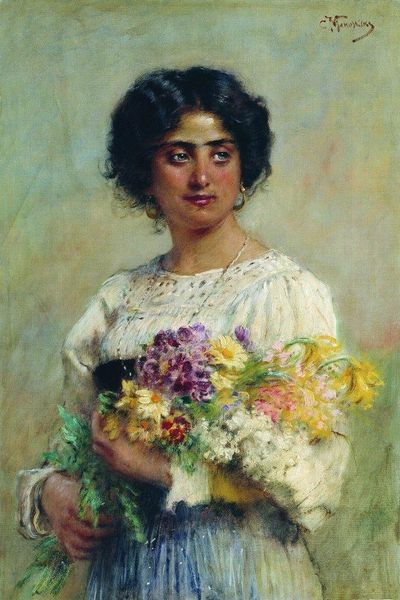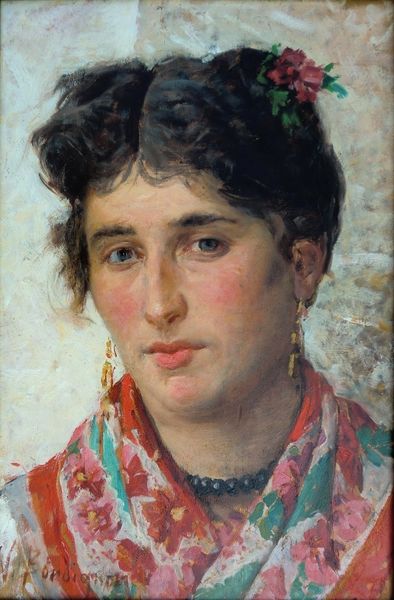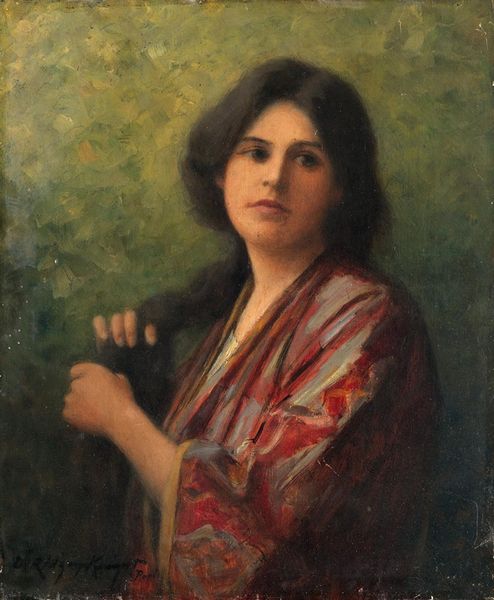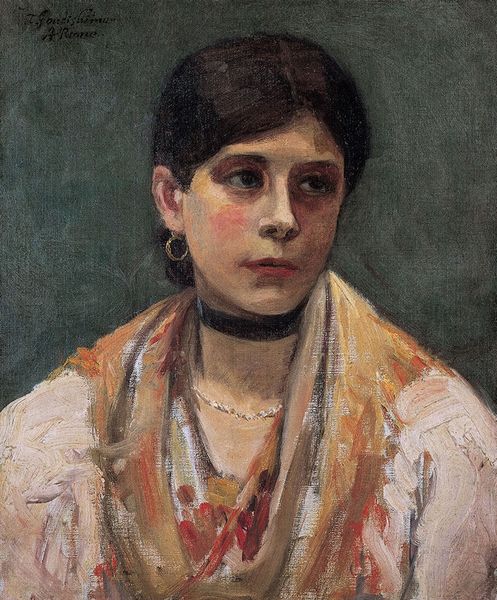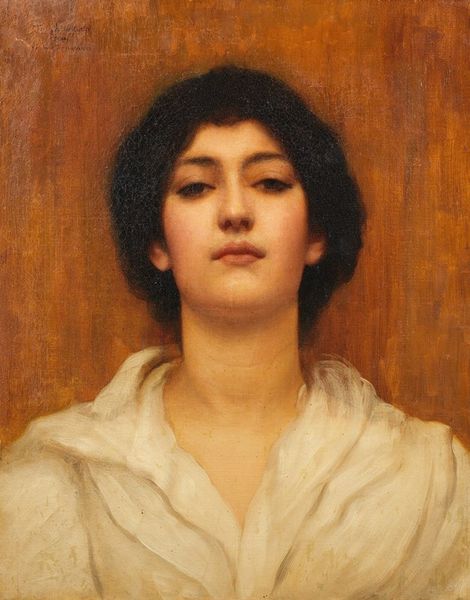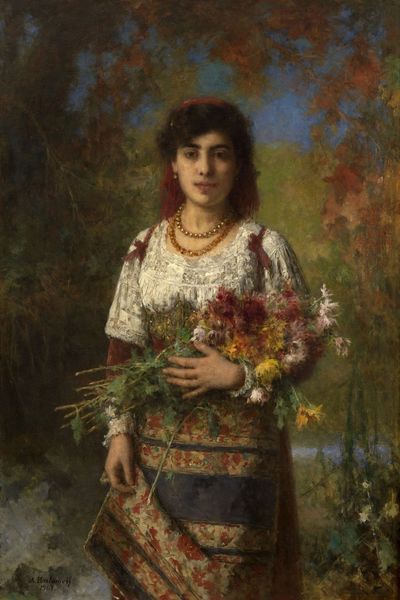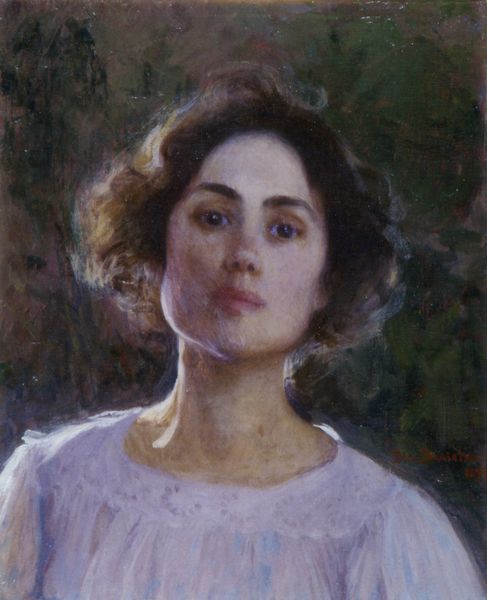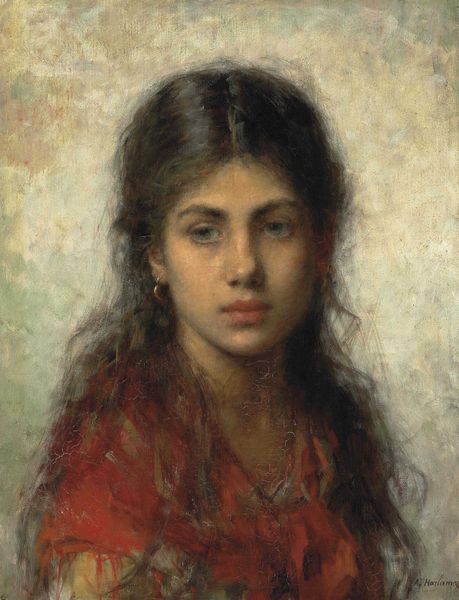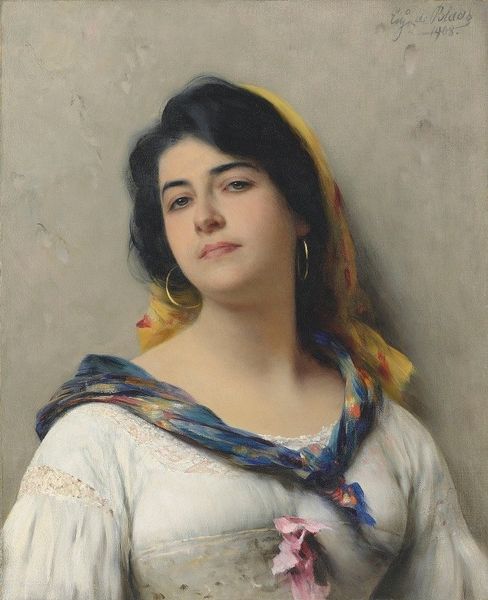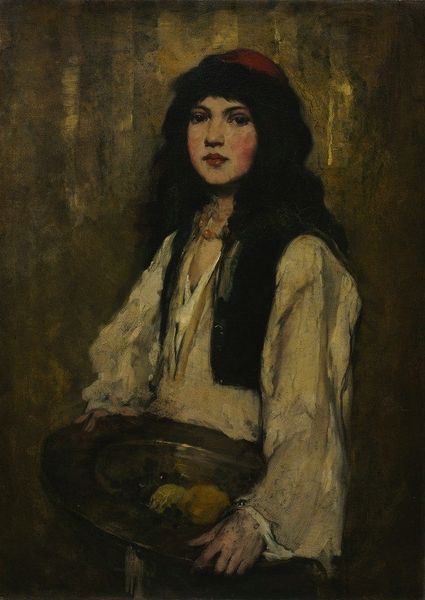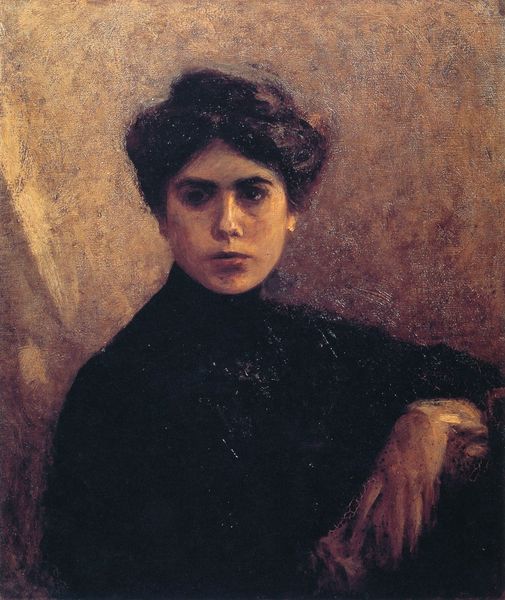
Copyright: Public domain
Editor: Here we have Konstantin Makovsky's "Female Portrait" from 1880, rendered in oil paint. The woman's gaze is captivating; it feels both direct and somewhat melancholic. What can you tell me about this work? Curator: Makovsky's portraits, while celebrated for their aesthetic appeal, also offer a lens through which we can examine 19th-century perceptions of femininity and identity, particularly within the context of Russian society. Note the subtle tension between the subject's adornment, the rose and shawl, and the unidealized depiction of her features, like the mole near her nose. Editor: Tension, yes. It almost feels like two portraits in one - there is adornment but also... honesty. Curator: Exactly. What socio-political message could Makovsky be subtly including? How do women interact with the society around them, and are these adornments signifiers of wealth or something else entirely? Also, how do the painting's embrace of Romanticism and Realism reflect that interaction? Is this subject romanticized or naturalistic? Editor: I hadn’t considered it in terms of social commentary, but the woman does look... not necessarily oppressed, but burdened. There is an element of truth here in what is being said about femininity. It also reflects some common visual dichotomies. Curator: Right, so we've begun to consider the dichotomy of opulence and burden and can now consider Makovsky's influences as an artist. He was very keen on the past, which also may have subtly informed his construction of the painting. I think it reveals quite a bit about society and art back then and now, with today's need to reflect real individuals rather than ideals. Editor: This was very insightful! Thank you for shedding light on those perspectives. Curator: Absolutely. Considering art as an intersectional social commentary is critical to gaining insights.
